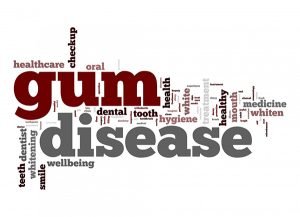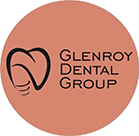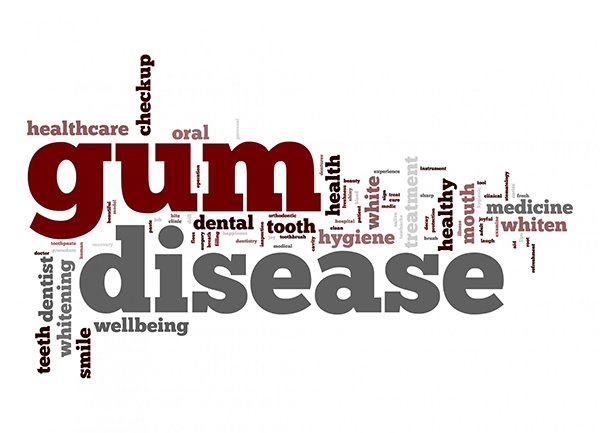 Many people wonder how periodontal disease starts, and the simple answer is poor oral hygiene, with many other influencing factors involved.
Many people wonder how periodontal disease starts, and the simple answer is poor oral hygiene, with many other influencing factors involved.
Fortunately, gum disease can be prevented by regular brushing and floss. However, in cases of more advanced gum disease, treatment is used to help deal with the consequences.
One of the very first signs of this disease is bleeding gums, until it progresses to tooth loss. Gum disease is easy to prevent, but it becomes more complicated to cure once the disease starts.
Obviously, you don’t want to lose your teeth, which is why The Glenroy Dental Group is your partner in treating gum disease and saving teeth!
What Is Gum Disease?
Gingivitis is the mildest form of periodontal disease. It causes the gums to become red, swollen, and bleed easily. Gingivitis is reversible with professional treatment and good oral home care.
Untreated gingivitis can advance to periodontitis. Gums separate from the teeth, forming pockets that become infected. As the disease progresses, the pockets deepen and more gum tissue and bone are destroyed
To know how to avoid gum disease, it is important to know its causes, because removing them can be the first step towards the ‘cure’.
Take our Gum Disease Risk Quiz
Common Causes Of Gum Disease
Gum disease is most commonly caused by plaque—a film of bacteria that forms on gums and teeth that daily brushing, flossing, and rinsing removes.
Unfortunately, due to neglect, there are millions of adults who are already in the progressive stage of gum disease. The good news is that, early gum disease is reversible—so it may be time to pick up some new healthy habits. Preventive dental care services such as dental checkups at least every 6 months also helps.
Other factors can also have an influence including:
Smoking. Smoking makes your mouth more vulnerable to infections like gum disease.
Hormonal Shifts. Puberty, pregnancy, and other hormonal events can increase the chance of gum disease.
Prescription Meds. Medications may have a side effect of dampening saliva production and flow, leaving a dry mouth where bacteria can more readily spread.
Nutritional Deficiencies. Improper diet that lacks the nutrients your gums need can also weaken their strength.
Crooked Teeth. Misalignments mean more spaces where plaque can build up and harm your teeth and gums.
Family History. A history of gum disease in your family may put you at slightly increased risk for developing the bacterial infection.
Treating Gum Disease At The Glenroy Dental Group
The goal of treatment is infection control. The following are the common treatments:
Deep Cleaning (Scaling and Root Planing).
We remove plaque through a deep-cleaning method called scaling and root planing. Scaling means scraping off the tartar from above and below the gum line. Root planing gets rid of rough spots on the tooth root where the germs gather, and helps remove bacteria that contribute to the disease. In some cases a laser may be used to remove plaque and tartar. This procedure can result in less bleeding, swelling, and discomfort compared to traditional deep cleaning methods.
Medications
Medications may be used with treatments including scaling and root planing, but they cannot always take the place of surgery.
Surgical Treatments
A dentist or periodontist may perform flap surgery to remove tartar deposits in deep pockets or to reduce the periodontal pocket and make it easier for the patient, dentist, and hygienist to keep the area clean. This surgery involves lifting the gums and removing tartar. The gums are then sutured back in place so that the tissue fits snugly around the tooth. After surgery the gums heal more tightly around the tooth.
Bone and Tissue Grafts
In addition to flap surgery we may suggest procedures to regenerate bone or gum tissue. One technique that can be used with bone grafting is guided tissue regeneration. In this procedure, a small piece of material is inserted between the bone and gum tissue. This keeps the gum tissue away from where bone should be, allowing bone and connective tissue to regrow. Growth factors may also be used. If a substantial amount of gum has been lost, your dentist may suggest a soft tissue graft, in which synthetic material or tissue is used to cover exposed tooth roots.
The Glenroy Dental Group- Your Trusted Glenroy Dentist
At The Glenroy Dental Group, your health and happiness are our ultimate dental goals.
We use the latest technology available and employ the latest dental techniques to ensure that your dental health and appearance are at the highest level. We want you to receive the best possible dental care with no pain or anxiety!
Our offices are conveniently located in the Pascoe Vale Road shopping strip, Glenroy, with ample parking space, within easy walking distance of the Glenroy train station.
Our Promotions
New Patients
Exam, Scale & Clean $99
zipMoney Mediplan
zipMoney allows you to spread the cost of your treatment with flexible interest free payments on your own terms.
Contact us on (03) 9306 6511 or request your appointment online today!







